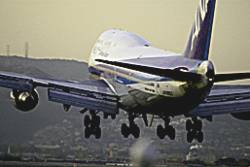Air Force Awards Service Support Contract for GPS III SVs
The U.S. Air Force has awarded Lockheed Martin a $68 million contract to provide mission readiness, launch, early orbit checkout, and on-orbit operations engineering support for the first two GPS III space vehicles.
Under the contract, Lockheed Martin will provide technical support to the Air Force’s 2nd Space Operations Squadron (2SOPS) and monitor the health and performance of the first two GPS III satellites from launch through their 15-year operational design lives.
By Inside GNSS










